Loggerheads, also known as “loggerhead turtles,” or “loggerhead sea turtles,” are large sea turtles native to many of the world’s oceans. They have reddish-brown colored shells, and large, powerful beaks. These sea turtles, like many sea turtle species, are threatened with extinction.
Historically, hunting for their meat, shells, and eggs, caused heavy population decline. Today, entanglement in fishing gear is the most common cause for population decline. Read on to learn about the loggerhead.
Description of the Loggerhead
These turtles are the second largest sea turtle species, behind the leatherback sea turtle. Loggerheads are the largest species of sea turtle with a hard shell. The weigh in at around 300 lbs. on average, though the heaviest specimen weighed 1,202 lbs!
The longest individuals measure 7 ft. long, though typical lengths usually measure closer to 2.5 – 3.5 ft. long. Their shells have ridged sections running down the spine and sides of the shell.
Interesting Facts About the Loggerhead
These sea turtles are threatened by human activity, and though most people appreciate that sea turtles are beautiful and deserve protection, not many people know anything about them! Learn more about loggerheads below.
- Shell it Out – Unlike some terrestrial turtle and tortoise species, sea turtles cannot withdraw all the way into their shells. Like other turtle species, sea turtles have a top shell, known as a carapace, and a bottom shell, known as a plastron. Unlike other turtles, sea turtles’ extremities cannot be withdrawn most of the way into the shells to protect them. Instead, they rely upon their swimming speed to escape predators.
- Scute Through – Though they cannot withdraw into it, their shells are not without their protections. They do provide hard structure to guard the soft internal organs. Each shell is lined with hard scutes. Loggerheads have five ridged scutes down their backs, known as vertebral scutes. These are lined on either side with an additional five coastal scutes on either side.
- Crocodile Tears – These turtles have a gland behind their eyes to aid in salt excretion, which is called the lachrymal gland. While on land, excretion of salty water from this gland gives the appearance of crying. In reality, the turtles are simply expelling excess salt, accidentally consumed while hunting, from their bodies.
- Eggstra-danger – Despite knowledge of this species’ decline, many countries continue hunting and eating loggerhead turtle eggs. Some countries, such as Mexico, fail to strictly enforce conservation laws, and consumption of eggs continues. Sadly, this isn’t even the most dire threat to the species’ survival.
Habitat of the Loggerhead
Once this species has crawled from their hatching place on sandy beaches to the ocean, they remain there for an incredibly long period. Until they reach sexual maturity, these turtles will remain in the open ocean, or in shallow coastal seas. Males will never return to the beach, and females only return to lay their own eggs.
Hatchlings and juveniles will remain in more protected areas, such as floating beds of seaweed and shallow estuaries. Adults spend more time in the open ocean, swimming anywhere between the temperatures of 56º and 82º F.
Distribution of the Loggerhead
This species has an incredibly cosmopolitan distribution, which means that they are very widespread across the world’s oceans. They are only restricted by their preferred temperature range, and can be found in the Atlantic Ocean, Pacific Ocean, Indian Ocean, and Mediterranean Sea.
They are known to migrate long distances to return to the beaches where they were born. Nesting is common in the southeastern United States, southern Africa, the Arabian Peninsula, Australia, and Japan.
Diet of the Loggerhead
Loggerhead sea turtles are omnivorous, which means that they will feed on both plant and animal matter. Their favorite prey is invertebrates, which they locate by swimming along the bottom of shallow seas.
They will eat snails, slugs, clams, mussels, crabs, lobsters, shrimp, coral, jellyfish, sponges, worms, barnacles, squid, octopus, sea urchins, starfish, sea turtle hatchlings, algae, and underwater plants. They use their large, powerful beaks to crush any food they find.
Loggerhead and Human Interaction
There are so many different threats to the survival of this species. Hunting for meat and eggs was once much more of a problem, but still persists to this day. Bycatch is also a huge problem, and causes thousands of turtle deaths per year. Fishermen using nets to capture different species of fish accidentally catch these turtles in the process. The use of turtle excluder devices (TEDs) has some success in reducing bycatch.
Another serious danger to these creatures is garbage. Turtles that are necropsied after death, or that are sick when captured, almost always have some level of debris in their stomachs, such as plastic bags, balloons, plastic sheets, and Styrofoam pellets.
These are frequently mistaken for yummy jellyfish. Habitat destruction causes a reduction of nesting beaches, artificial lighting confuses hatchlings, making them more susceptible to predation. Global climate change can potentially alter the ratio of males to females when hatching, the list goes on.
Domestication
Loggerheads have not been domesticated in any way.
Does the Loggerhead Make a Good Pet
This species is protected, and it is highly illegal to own one as a pet.
Loggerhead Care
The specimens in zoos and aquariums are there because they cannot be released back into the wild, usually due to injury, deformity, or other anthropogenic causes. They can be kept in saltwater aquariums without any source of land, as they would not return to beaches unless they are laying eggs.
In a zoological setting this species eats a variety of items, including fish, crustaceans, and invertebrates. Many individuals need help maintaining neutral buoyancy because of injuries, and may have some type of flotation device or weight to help them swim more efficiently.
Behavior of the Loggerhead
These sea turtles are diurnal, which means they are most active during the day. They alternate between foraging for food and resting on the bottom of the ocean. They can hold their breath for up to four hours, but most dives only last about half an hour.
Females are commonly aggressive towards one another, and will actually move into full territorial combat over optimal feeding grounds. The more prosperous the feeding ground is, the more likely that the turtles will escalate to full-blown battle.
Reproduction of the Loggerhead
This species does not reproduce until the turtle reaches 17 years old at the earliest, or 33 years old at the latest. Females can store sperm after mating, and single clutches may have multiple paternal fathers. The female will return to the beach on which she hatched, and climb up the beach to find an optimal nesting site.
She will dig a hole above the high-tide line, and lay approximately 112 eggs. After 80 days, the hatchlings dig themselves to the surface, and crawl to the ocean. Once they make it to the water, they will swim for 20 hours to reach the floating seaweed beds offshore.

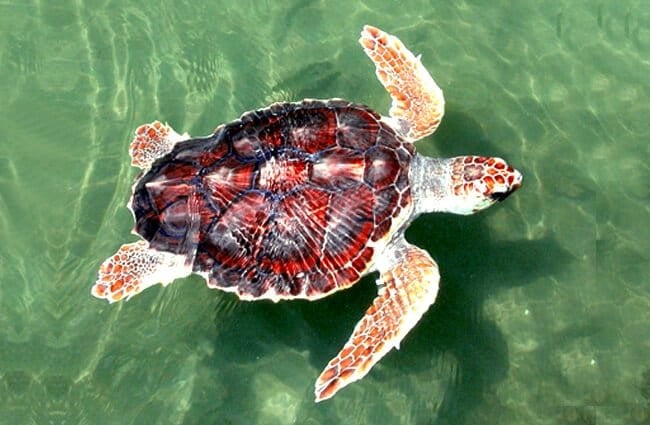
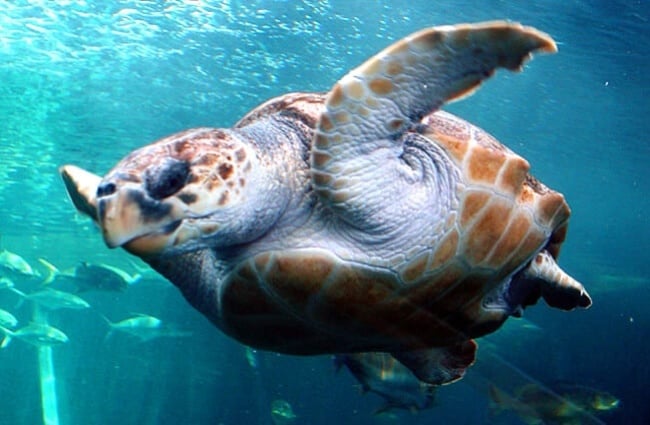
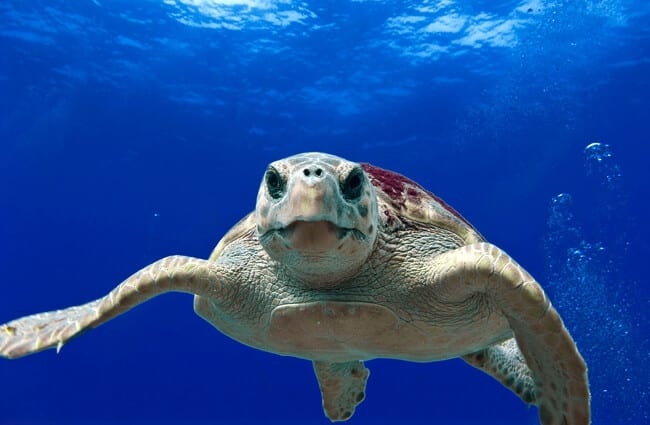
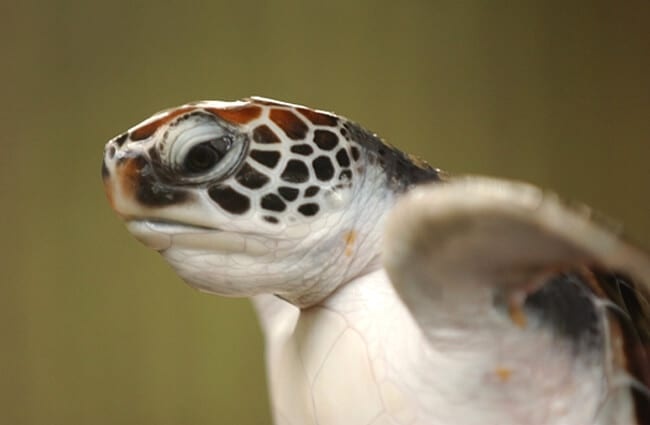


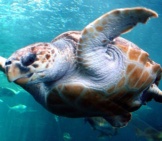
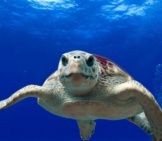


![Red Angus Closeup of a beautiful Red Angus cowPhoto by: U.S. Department of Agriculture [pubic domain]https://creativecommons.org/licenses/by/2.0/](https://animals.net/wp-content/uploads/2020/03/Red-Angus-4-238x178.jpg)












![Red Angus Closeup of a beautiful Red Angus cowPhoto by: U.S. Department of Agriculture [pubic domain]https://creativecommons.org/licenses/by/2.0/](https://animals.net/wp-content/uploads/2020/03/Red-Angus-4-100x75.jpg)

